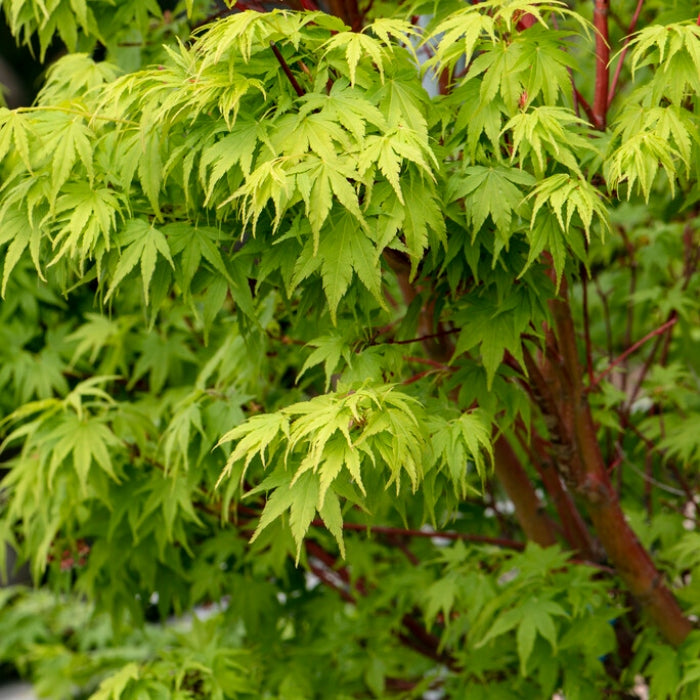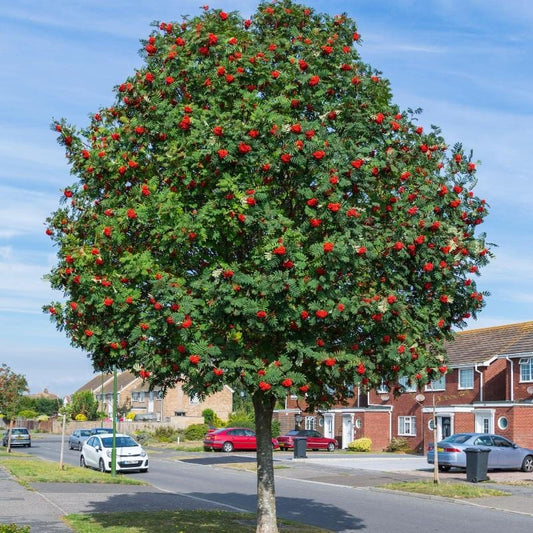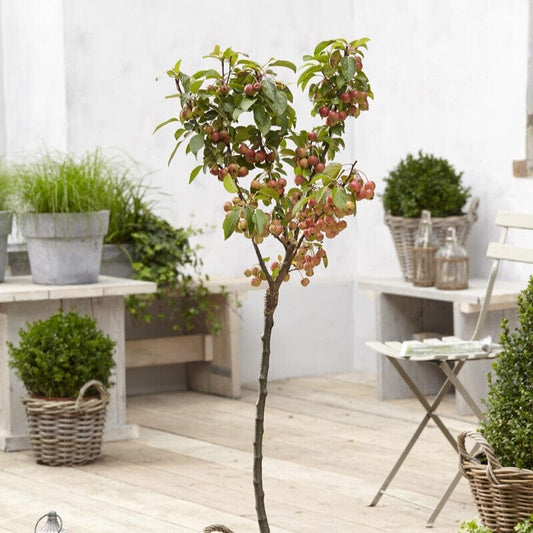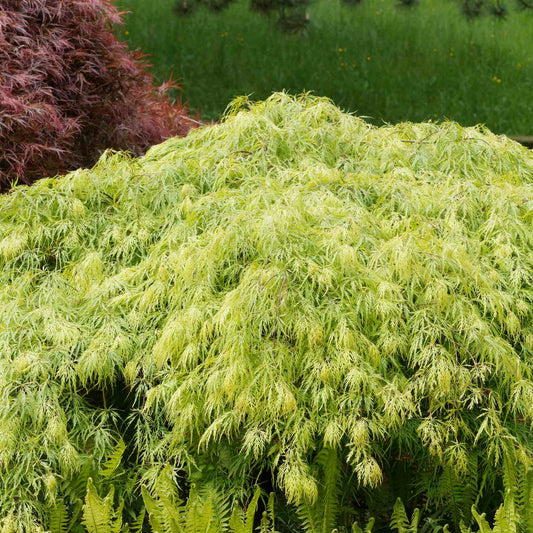Best Trees for Shade

Who doesn’t love a good tree in their garden? Be they fruiting or flowering, majestic and mature or adorable and tiny, trees have the potential to utterly transform an outdoor space. Sadly, we can’t all be blessed with a south-facing sun trap, but that shouldn’t be a reason not to have a cracking tree (or two) growing in your garden. In this post, we’ll be delving into the best trees for shade, including the evergreen, small, fastest-growing and much, much more.
Jump to:
- Best evergreen tree for shade
- Best small tree for shade
- Fastest-growing tree for shade
- Container-grown tree for shade
- Best autumn colour tree for shade
- Tip for growing trees in shade
What is the best evergreen tree for shade?
English Holly | Ilex aquifolium
If it’s year-round interest you’re after and evergreens are calling your name, then it’s hard to look past hollies (Ilex). Grown as small trees or large shrubs, these festive favourites are known for their iconic bright red berries and glossy, thorny evergreen foliage. Able to tolerate even deep shade, holly plants – particularly non-variegated options – are as easy and straightforward to grow as they are good to look at. It makes sense, when you think about it, that these plants grow well in shade given that many are native to woodland locations.

What is the best small tree for shade?
Japanese Maple | Acer palmatum
If space isn’t on your side and you’ve only got a relatively small amount of room with which to work, then may we suggest a Japanese maple tree. While they still need a bit of light, purple-leaved varieties (such as ‘Tamukeyama’) are slow-growing (and generally pretty low-growing) trees that are used to growing in the dappled light of the understorey. Cultivars like ‘Bloodgood’ and ‘Atropurpureum’ are also well-suited to growing in large patio pots.

What is the fastest-growing tree for shade?
Common Hornbeam | Carpinus betulus
Generally speaking, the fastest growing trees need good levels of light to turbocharge their growth. That said, there are some trees that can tolerate a bit of shade and still grow nice and quickly, most notably of which is the hornbeam. A sneaky alternative, and one we’d seriously suggest you consider, is to buy a mature tree to grow in shade; they might not be particularly quick to grow, but they’re sent to you at a mature height, which in effect achieves the same end result you’re looking for – a larger, established tree without the waiting.

What is the best container-grown tree for shade?
Portuguese Laurel | Prunus lusitanica
Should you have a shady patio or terrace and still want to be able to grow a tree or two, then Japanese maples are, again, a good pick. For the sake of choosing something different and keeping this list fresh, however, we’re opting for the Portuguese laurel tree. While it might not flower as prolifically if grown in shade, you’re still left with a very attractive foliage plant that can be topiaried and easily grown in a container. Bay laurel and yew trees also deserve honourable mentions.

Which tree for shade has the best autumn colour?
Rowan | Sorbus aucuparia and Flowering Dogwood | Cornus florida
There are several trees that grow well in partial shade that also boast excellent autumn leaf colour. Rowan trees, for instance, take on fabulous fiery hues towards the end of the year, while flowering dogwoods also tend to grow pretty nicely in shadier conditions, and again sport fantastic leaf colour come autumn. Japanese maples are coming out pretty well from this list and autumn colour is another category in which these trees rank highly (in particular, a variety called 'Ōsakazuki', whose leaves turn a stunning ruby red before falling).
Tips for growing trees in shade
How much watering do trees grown in shade require?
This obviously depends on the species in question, however it’s worth bearing in mind that shadier positions likely retain moisture longer than a spot that’s busy baking in the sun. As a result, this means that shade-grown trees might need less routine watering than their sun-grown counterparts. It’s also important, in a similar vein, that you don’t overwater your tree grown in shade as most plants don’t like to stand in waterlogged soil.
What soil is best for a shade-grown tree?
While the specifics can vary from plant to plant, most trees grow best in soil with good drainage that still retains a bit of moisture. Again, bear in mind that a shadier spot will retain more moisture than a sunny position, and consider improving drainage in naturally heavy soils using perlite or horticultural grit.
How do I mulch shade-grown trees?
It’s important to bear a couple of things in mind in terms of the mulch you apply around those trees grown in shade. One of the main reasons to mulch plants generally is to help retain moisture. In shady spots, this isn’t a problem; you don’t want your mulch to be adding moisture to already moist soil. Mulching is still worthwhile, however, as it can suppress competition and help keep temperatures consistent around the tree. The answer is to apply a thinner layer of mulch, made from a coarser material (like wood chips).
Final thoughts
So, there you have it! Hopefully, having read this you have a better understanding of which trees grow well in shade, as well as knowing the specific trees best-suited to specific situations.
Last updated: 16/10/2025


























